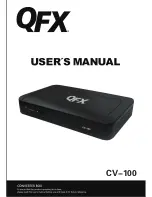
EN
77
8.7 Storage and dismantling
8.7.1 Storage of the equipment or prolonged stop
If the equipment is not used immediately or is stored for long periods, check that it is correctly packed and contact FIMER for storage
instructions.
The equipment must be stored in well-ventilated indoor areas having no characteristics that could damage the components of the
equipment.
Restarting after a long or prolonged stop requires a check and, in some cases, the removal of oxidation and dust that will also have settled
inside the equipment if not suitably protected.
8.7.2 Dismantling, decommissioning and disposal
FIMER is not responsible for disposal of the equipment, or part of it, which does not take place on the basis of the regulations and laws in
force in the country of installation.
The symbol of the cancelled bin (where present) indicates that the product must not be disposed with domestic waste at the
end of its useful life.
This product must be delivered to the waste collection point of the local community for recycling.
For further information, refer to the public body responsible for waste disposal in the country.
Inappropriate disposal of waste can have a negative impact on the environment and human health owing to potentially dangerous
substances.
By cooperating in the correct disposal of this product, you contribute to the reuse, recycling and recovery of the product, and the protection
of our environment.
Dispose of the various types of materials that the parts of the equipment consist of in dumps that are suitable for the purpose.
COMPONENT
MATERIAL OF CONSTRUCTION
Frame, brackets, supports
Arc-welded steel FE37, aluminium
Casing or covers
ABS, plastic
Paint
RAL
Gaskets and seals
Rubber / Teflon / Viton
Electrical cables
Copper / Rubber
Cable trays
Polyethylene / Nylon
Batteries
Nickel / Lead/ Lithium
8.7.3 Procedure for dismantling the equipment
WARNING –
B
The dismantling operations must be carried out with the equipment disconnected from any voltage sources. Refer
to
“Inverter total de-energization”
paragraph on this manual to know all the necessary step to safely operate on the inverter.
ATTENTION –
A
Never open the lower connection box in the case of rain, snow or a level of humidity >95%. Always carefully seal
all unused openings.
Even though the device is equipped with an anti-condensation valve, air with extremely high levels of humidity can lead to the creation of
condensation inside the inverter.
As the inverter is almost completely insulated from the outside, condensation can also form after maintenance interventions in certain
weather conditions.
ATTENTION –
A
During dismantling always protect the inverter parts that are installed and exposed to the weather elements!
ATTENTION –
A
Staff authorised to carry out the dismantling operations must be specialised and experienced in this job. They must
also have received suitable training on equipment of this type.
To dismantling and disassemble the inverter
(01)
follow these steps:
• Isolate the equiment referring to the “Inverter total de-energization” paragraph.
• Disconnect any external voltage sources
• Lift and remove the inverter following the indications for the mounting procedure in the “Assembly the Inverter to the bracket” paragraph
in the reverse order and the indication for lifting methods in “Lifting” paragraph.
To dismantling and disassemble the mounting bracket
(05)
follow the indications for the mounting procedure in the “Bracket installation”
paragraph in the reverse order.
Содержание FMR-PVS-10-TL-SX
Страница 1: ...Solar Inverter PVS 10 12 5 15 TL Product Manual ...
Страница 15: ...EN 15 3 4 1 Inverter external view 02 07 05 01 03 04 26 09 23 08 20 21 ...
Страница 16: ...EN 16 08 05 19 19 09 16 18 18 25 15 14 17 13 12 10 11 ...
Страница 79: ...EN 79 ...




































